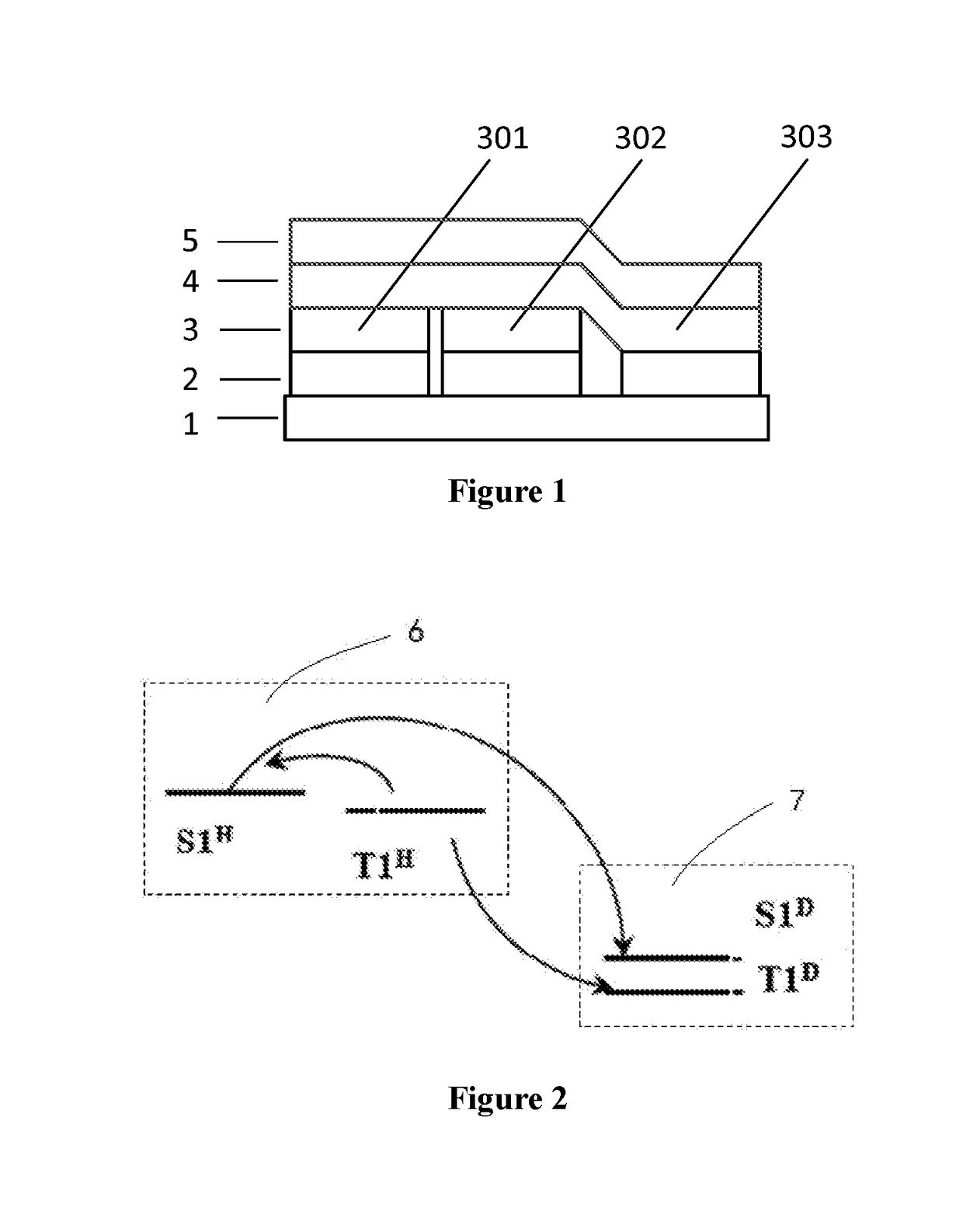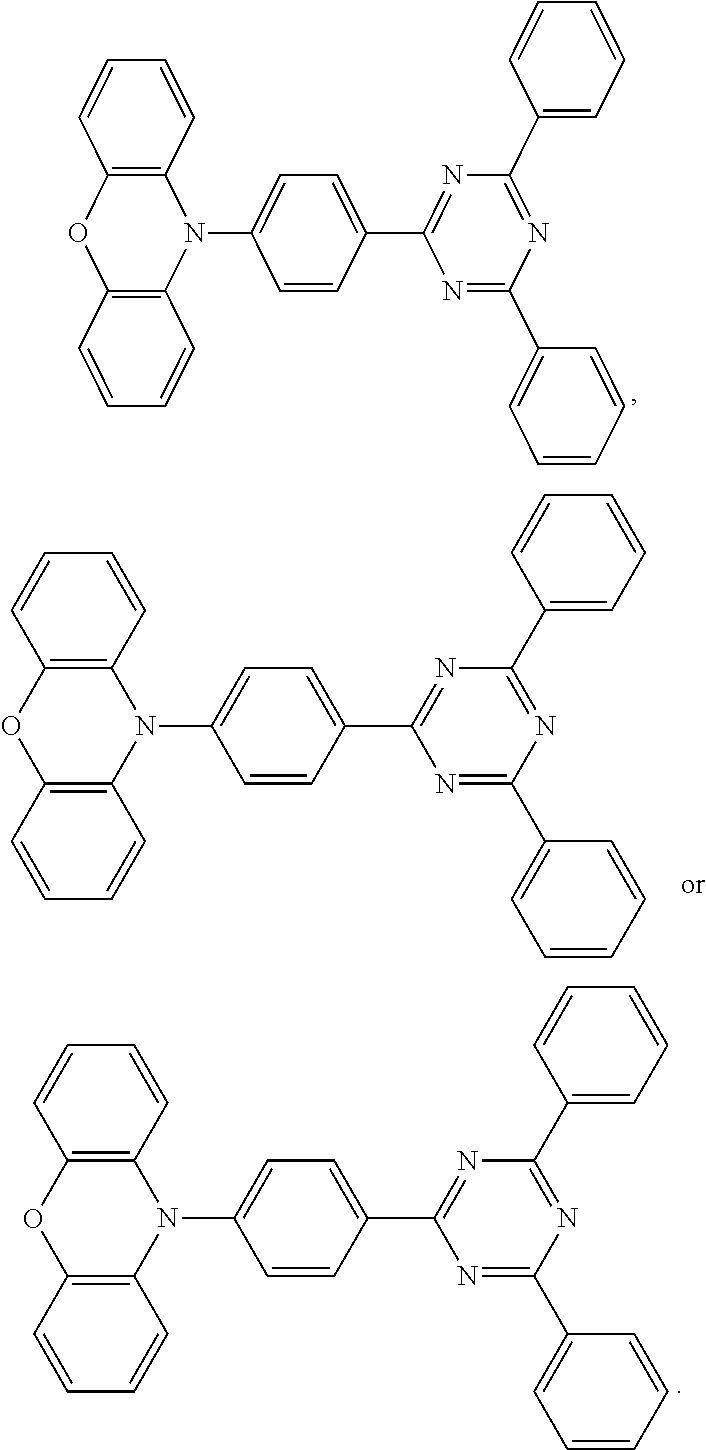Organic electroluminescent device
a technology of electroluminescent display device and organic electroluminescent light, which is applied in the direction of basic electric elements, semiconductor devices, electrical apparatus, etc., can solve the problems of increasing production cost, increasing production cost, and increasing the thickness of the screen body
- Summary
- Abstract
- Description
- Claims
- Application Information
AI Technical Summary
Benefits of technology
Problems solved by technology
Method used
Image
Examples
embodiment 1
[0027]This embodiment provides an organic electroluminescent device, as shown in FIG. 1, comprising a first electrode 2, a first light-emitting layer 3, a second light-emitting layer 4 and a second electrode 5 stacked upon a substrate 1, wherein the first light-emitting layer 3 comprises red light units 301, green light units 302 and blue light units 303, which are arranged in the same layer, and the second light-emitting layer 4 is a blue light layer. In this embodiment, preferably, the blue light unit 303 in the first light-emitting layer 3 is formed by a part of the second light-emitting layer 4 extending into the first light-emitting layer 3, that is to say, the blue light unit 303 has the same material as that of the second light-emitting layer 4.
[0028]As an alternative embodiment of the present invention, the material of the blue light unit 303 may also be different from that of the second light-emitting layer 4, which can also achieve the purpose of the present invention and ...
embodiment 2
[0034]This embodiment provides an organic electroluminescent device with the same device structure as that of Embodiment 1, and the difference is that the host material of the red light unit 301 is the Thermal Activation Delayed Fluorescence material of formula (1-1) and the host material of the green light unit 302 is the Thermal Activation Delayed Fluorescence material of formula (1-2).
embodiment 3
[0035]This embodiment provides an organic electroluminescent device with the same device structure as that of Embodiment 1, and the difference is that the host material of the green light unit 302 is the Thermal Activation Delayed Fluorescence material of formula (1-11).
PUM
 Login to View More
Login to View More Abstract
Description
Claims
Application Information
 Login to View More
Login to View More - R&D
- Intellectual Property
- Life Sciences
- Materials
- Tech Scout
- Unparalleled Data Quality
- Higher Quality Content
- 60% Fewer Hallucinations
Browse by: Latest US Patents, China's latest patents, Technical Efficacy Thesaurus, Application Domain, Technology Topic, Popular Technical Reports.
© 2025 PatSnap. All rights reserved.Legal|Privacy policy|Modern Slavery Act Transparency Statement|Sitemap|About US| Contact US: help@patsnap.com



